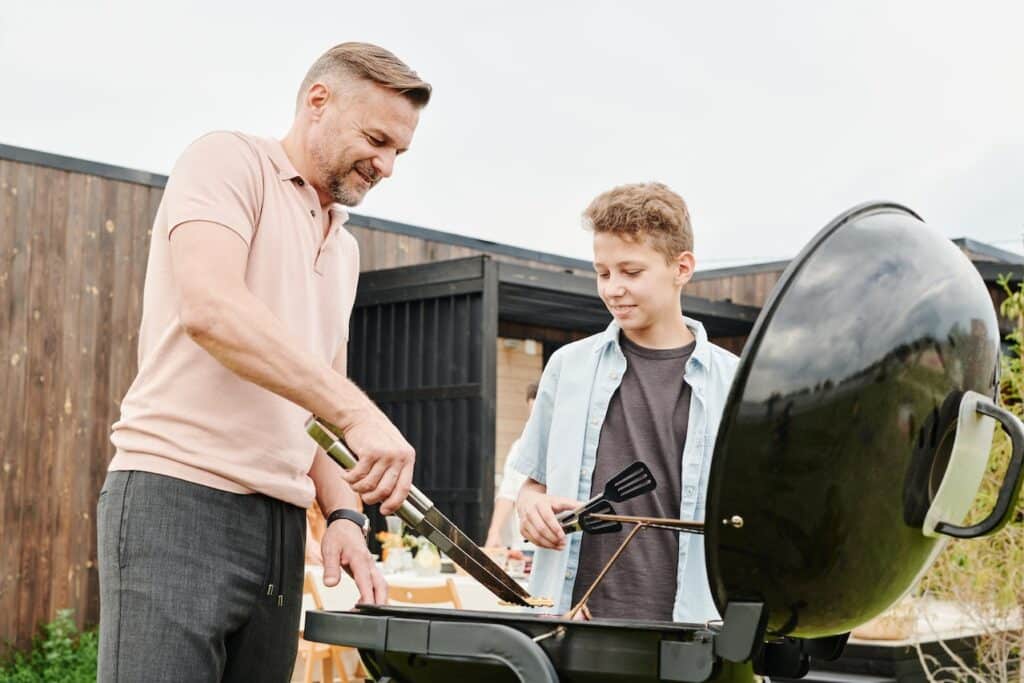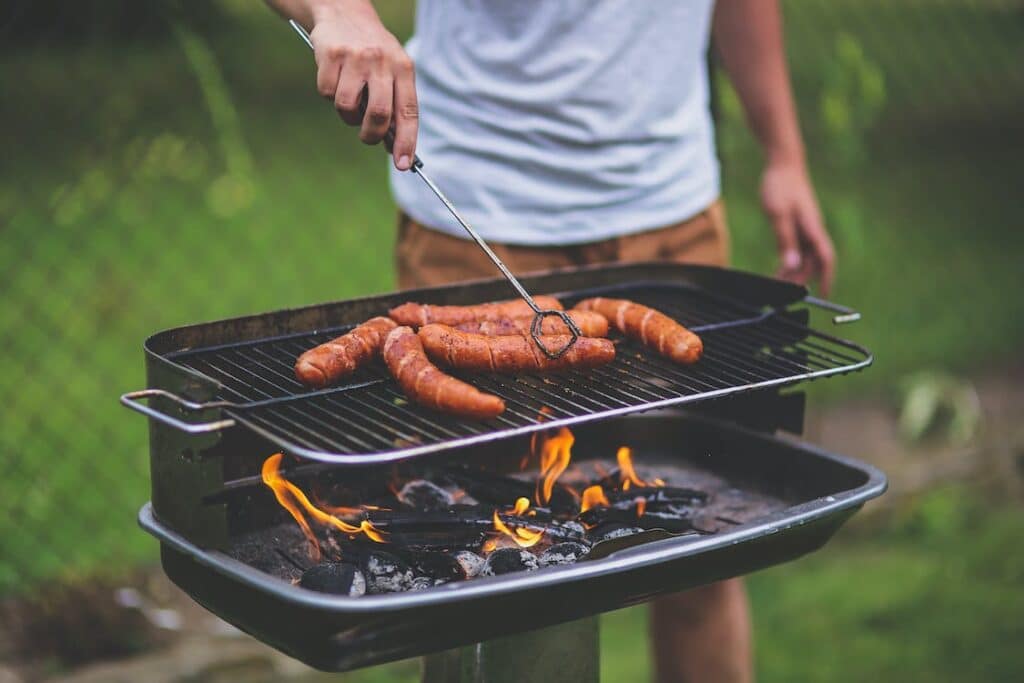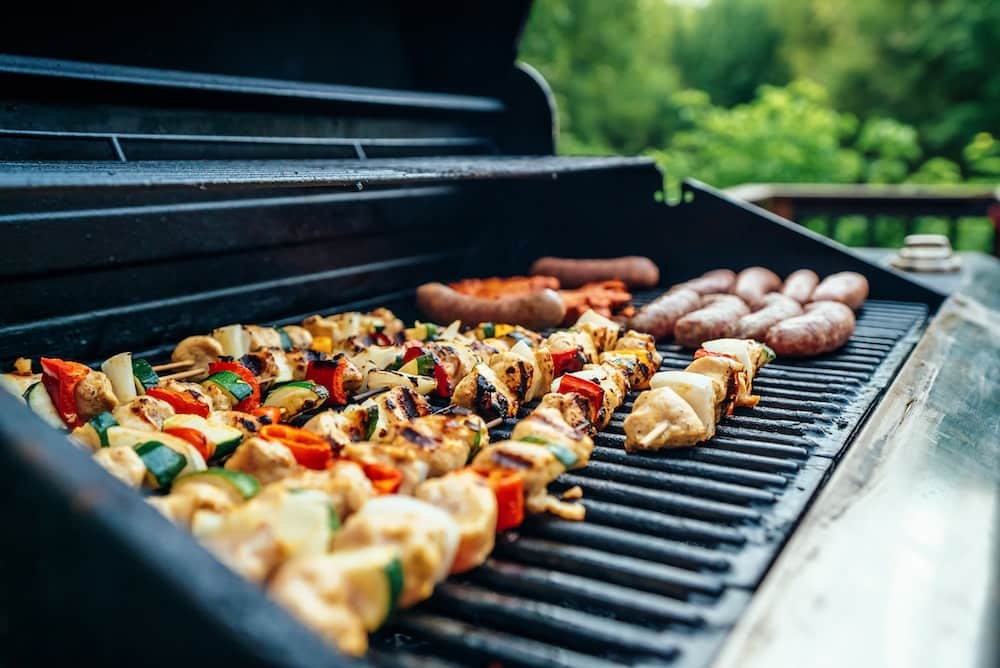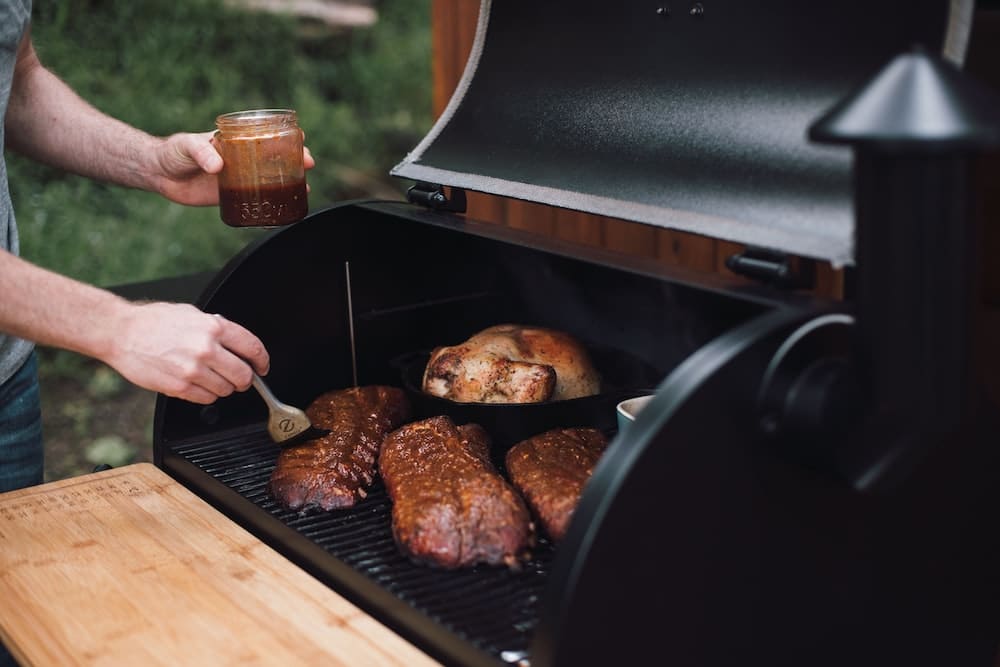
Are you a barbecue enthusiast looking to perfect your pork butt cooking technique? One question that often arises in the world of smoking is whether to cook your pork butt with the fat side up or down. In this article, we’ll dive into this age-old debate and provide you with some insights to help you make an informed decision. Whether you’re aiming for succulent, melt-in-your-mouth meat or a crispy, flavorful bark, we’ll explore the pros and cons of both methods so you can achieve the best results every time.
When it comes to smoking pork butt, the position of the fat cap can make a difference in the final outcome. Some pitmasters swear by cooking with the fat side up, arguing that it acts as a natural basting agent, keeping the meat moist and adding flavor. On the other hand, there are those who prefer to cook with the fat side down, believing that it acts as a protective barrier, shielding the meat from direct heat and preventing it from drying out. In the next few paragraphs, we’ll delve deeper into these perspectives and help you determine which approach might work best for you.
Before we get into the specifics, it’s important to note that the fat content in pork butt is what contributes to its tenderness and rich flavor. The fat slowly renders during the cooking process, keeping the meat juicy and imparting a delicious taste. Whether you choose to cook with the fat side up or down, ensuring a good amount of fat remains on the meat is crucial for achieving a mouthwatering result. So, let’s explore the different factors to consider when deciding whether to place your pork butt fat side up or down on the smoker.
What is Pork Butt?
Now that we’ve discussed the debate of cooking pork butt with the fat side up or down, let’s take a moment to understand what exactly pork butt is.
Contrary to what the name suggests, pork butt is not actually taken from the rear end of the pig. In fact, pork butt is cut from the upper shoulder area of the pig. The name “butt” comes from the barrels, known as “butts,” in which pork was often shipped during colonial times. These barrels were used to store a variety of cuts, including the shoulder.
Pork butt is a flavorful and versatile cut of meat that is perfect for smoking or slow cooking. It is well-marbled with fat, which helps to keep the meat tender and moist during the cooking process. The fat also adds an incredible richness and depth of flavor to the meat.
Typically, pork butt is a larger and more affordable cut compared to other cuts like pork loin or tenderloin. It often comes with a bone, which adds even more flavor to the meat. When cooked low and slow, the connective tissues in the pork butt break down, resulting in a succulent and melt-in-your-mouth texture.
Now that you have a better understanding of what pork butt is, let’s move on to discussing the various methods of cooking it, specifically focusing on whether to cook it with the fat side up or down.
Cooking Pork Butt with Fat Side Up
So, you’re ready to smoke some delicious pork butt, but you’re unsure whether to cook it with the fat side up or down. Well, let me shed some light on the topic and help you become a master on the grill!
Cooking pork butt with the fat side up is a popular technique among pitmasters. Why? Because that layer of fat acts as a natural basting agent. As the fat renders and melts during the cooking process, it drips down into the meat, keeping it moist and flavorful. The fat also helps to create a beautiful crust on the outside of the pork butt.
When you cook with the fat side up, the fat acts as a protective barrier, preventing the meat from drying out. This is especially important when smoking pork butt, as the low and slow cooking process can take several hours. By keeping the fat side up, you’re ensuring that your pork butt stays juicy and tender throughout the entire cooking process.
It’s important to note that not all pork butts are created equal. Some cuts may have more fat on one side than the other. In these cases, it’s best to cook the pork butt with the fat side up, as it will provide better basting and protection for the meat.
Remember, fat equals flavor. The fat in pork butt adds richness and juiciness to the meat, so it’s important to leave a good amount of fat on the meat before cooking. This will ensure that your pork butt is tender, moist, and bursting with flavor.
Advantages of Cooking Pork Butt with Fat Side Up
When it comes to cooking pork butt, there is a longstanding debate among pitmasters about whether to cook it with the fat side up or down. As a grill master, I’m here to share some insights on the advantages of cooking pork butt with the fat side up to help you enhance your grilling skills.
1. Natural Basting Agent: One of the main benefits of cooking pork butt with the fat side up is that the fat acts as a natural basting agent. As the fat renders during the cooking process, it drips down onto the meat, keeping it moist and flavorful. This self-basting action helps to ensure that every bite is juicy and succulent.
2. Enhanced Flavor: Cooking pork butt with the fat side up allows the flavors from the fat to penetrate the meat, resulting in a more flavorful end result. The fat acts as a flavor carrier, infusing the pork butt with its rich and savory taste. This adds depth and complexity to the overall flavor profile of the meat.
3. Crispy Bark: Another advantage of cooking pork butt with the fat side up is that it helps to achieve a crispy bark on the outside of the meat. The fat on the surface of the pork butt helps to create a barrier that protects the meat from drying out while still allowing it to develop a delicious crust. The result is a perfect balance of tender meat and a crispy exterior.
4. Visual Appeal: Lastly, cooking pork butt with the fat side up can also enhance the visual appeal of your final dish. As the fat renders and caramelizes, it creates a beautiful golden-brown color on the surface of the meat. This adds an enticing visual element to your grilled masterpiece, making it even more tempting to devour.

Cooking Pork Butt with Fat Side Down
« Master the Art of Searing: Unlocking the Science and Techniques for Perfectly Crusted and Flavorful Meals
Easy Tips for Cleaning and Maintaining Your Best Portable Charcoal Grill »
When it comes to cooking pork butt, there is an ongoing debate about whether to cook it with the fat side up or down. While some pitmasters swear by cooking with the fat side up, others argue for cooking with the fat side down. In this section, we’ll explore the benefits of cooking pork butt with the fat side down and why it might be the right approach for you.
One advantage of cooking pork butt with the fat side down is that it acts as a protective barrier. The layer of fat acts as insulation, helping to keep the meat moist and tender during the long cooking process. By creating a barrier between the meat and the heat source, the fat helps to prevent the meat from drying out, resulting in juicy and flavorful pork.
Another benefit of cooking with the fat side down is that it allows for better bark formation. The bark, also known as the flavorful crust on the outside of the meat, is a sought-after feature in barbecue. When the fat side is placed down, the meat is in direct contact with the grill grates, allowing for better caramelization and the development of a crispy bark. This adds a delicious texture and enhances the overall flavor of the pork.
In addition, cooking with the fat side down can improve the visual appeal of your pork butt. When the fat side is down, the rendered fat will naturally baste the meat as it cooks. This self-basting action helps to keep the meat moist and juicy, while also adding a rich flavor. The result is a beautifully caramelized and succulent pork butt that will impress your friends and family.
Advantages of Cooking Pork Butt with Fat Side Down
When it comes to cooking pork butt, there are different schools of thought on whether to cook it with the fat side up or down. While cooking with the fat side up has its advantages, there are also benefits to cooking with the fat side down. Let’s explore some of these advantages:
- Protective Barrier: One of the main benefits of cooking pork butt with the fat side down is that it acts as a protective barrier for the meat. The fat layer helps to insulate the meat, preventing it from drying out during the long smoking process. This results in a juicier and more tender final product.
- Better Bark Formation: The fat side down method promotes better bark formation on the pork butt. As the fat renders and drips down, it helps to create a flavorful and crispy exterior. This golden-brown bark adds a delightful texture and enhances the overall taste of the meat.
- Improved Visual Appeal: Cooking pork butt with the fat side down can also create a more visually appealing presentation. The fat melts away during the cooking process, leaving behind beautifully caramelized and glistening meat. This can make for an impressive centerpiece at your next barbecue gathering.
- Consistent Heat Distribution: Placing the fat side down helps to distribute heat more evenly throughout the pork butt. This ensures that the meat cooks uniformly and prevents any potential hot spots that could result in uneven cooking or charring.
Remember, whichever method you choose, it’s important to start with a well-marbled pork butt. The fat provides moisture, tenderness, and flavor to the meat. So, whether you decide to cook with the fat side up or down, make sure to have a good amount of fat on the meat.
Conclusion
After exploring the debate of whether to cook pork butt with the fat side up or down, you now have the information you need to make an informed decision. Remember, both approaches have their advantages. Cooking with the fat side up acts as a natural basting agent, enhancing the flavor and creating a crispy bark. It also adds visual appeal to your smoked pork butt. On the other hand, cooking with the fat side down provides a protective barrier, preventing the meat from drying out and allowing for better bark formation. It also ensures consistent heat distribution throughout the cooking process.
Regardless of whether you choose to cook with the fat side up or down, it’s important to ensure that you have a good amount of fat remaining on the meat. This fat is essential for both tenderness and flavor. Pork butt, being well-marbled with fat, is a perfect cut for smoking or slow cooking. It’s also a larger and more affordable cut compared to others, making it a popular choice for many barbecue enthusiasts.
So, go ahead and experiment with both methods to find what works best for you and your taste preferences. Enjoy the process of smoking your pork butt and savor the delicious results. Happy cooking!













